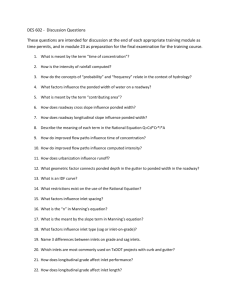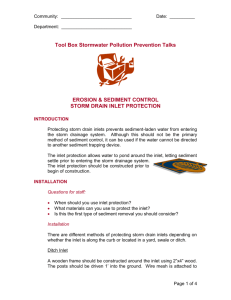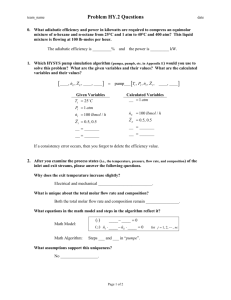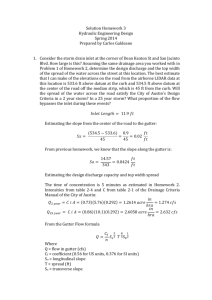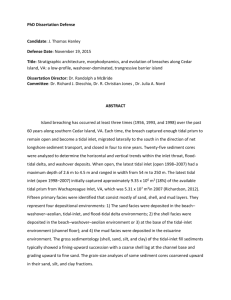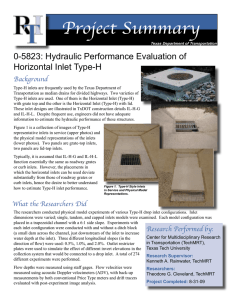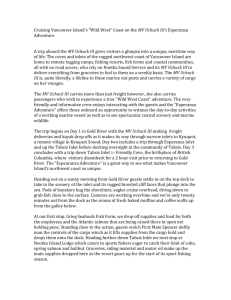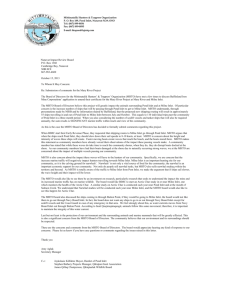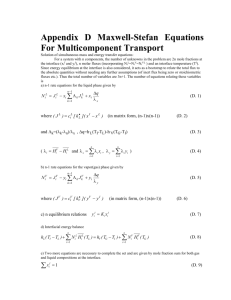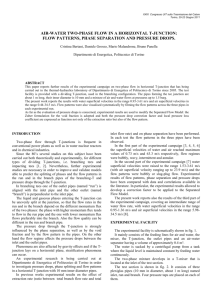DES602-FinalExamMasterPilotJuly2013
advertisement
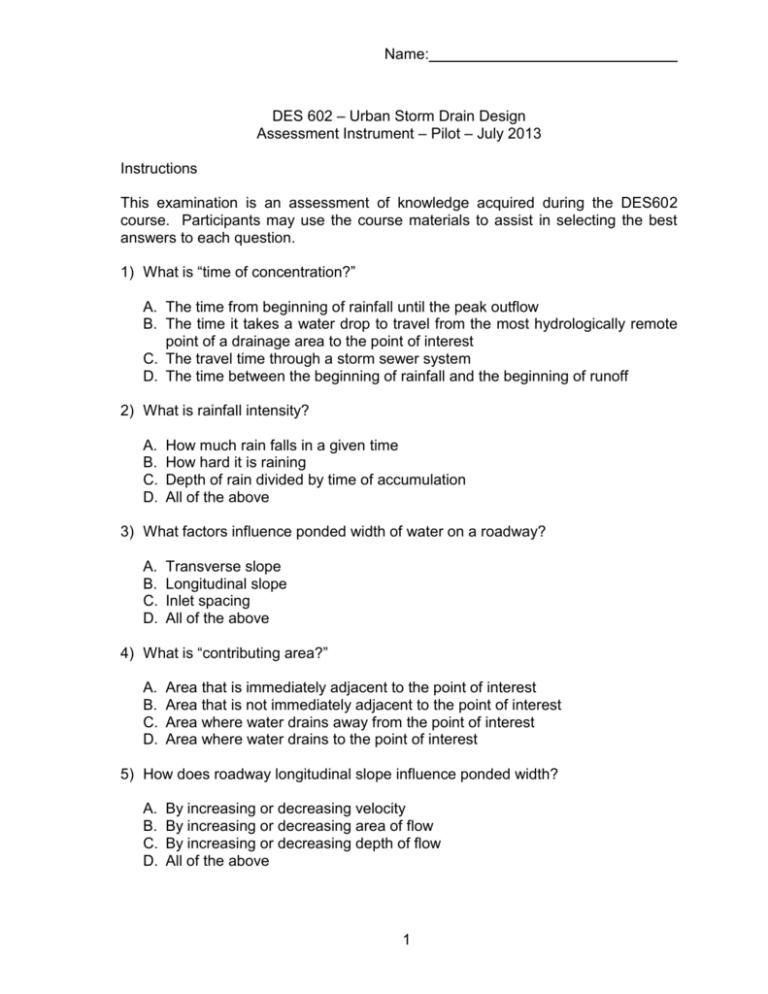
Name: DES 602 – Urban Storm Drain Design Assessment Instrument – Pilot – July 2013 Instructions This examination is an assessment of knowledge acquired during the DES602 course. Participants may use the course materials to assist in selecting the best answers to each question. 1) What is “time of concentration?” A. The time from beginning of rainfall until the peak outflow B. The time it takes a water drop to travel from the most hydrologically remote point of a drainage area to the point of interest C. The travel time through a storm sewer system D. The time between the beginning of rainfall and the beginning of runoff 2) What is rainfall intensity? A. B. C. D. How much rain falls in a given time How hard it is raining Depth of rain divided by time of accumulation All of the above 3) What factors influence ponded width of water on a roadway? A. B. C. D. Transverse slope Longitudinal slope Inlet spacing All of the above 4) What is “contributing area?” A. B. C. D. Area that is immediately adjacent to the point of interest Area that is not immediately adjacent to the point of interest Area where water drains away from the point of interest Area where water drains to the point of interest 5) How does roadway longitudinal slope influence ponded width? A. B. C. D. By increasing or decreasing velocity By increasing or decreasing area of flow By increasing or decreasing depth of flow All of the above 1 Name: 6) In the Rational Equation, Q=(1/z) C*I*A, the term I is A. B. C. D. Rainfall intensity Contributing area Rational Coefficient Dimensional correction coefficient 7) Which of the following may result in increased computed rainfall intensity? A. B. C. D. improved flow paths (i.e. drainage ditches) a land use change from pasture to dense forest construction of detention ponds installation of regulatory structures (dams) in the watershed 8) What effect does urbanization have on runoff? A. B. C. D. None Decreased runoff due to increased storage Increased runoff due to decreased infiltration Increased runoff due to improved flow efficiency 9) What restrictions exist on the use of the rational equation? A. B. C. D. Less than 200 acres No intensities computed for less than 10 minute duration Developed watersheds only A and B 10) What factors influence inlet spacing? A. B. C. D. E. Contributing area Roadway cross section/transverse slope Roadway cross section/auxiliary lanes Roadway longitudinal slope B, C, and D 11) What is meant by the slope term in Manning’s equation? A. B. C. D. The longitudinal slope of the channel The sideslope of the channel The friction slope of the energy grade line A and B 2 Name: 12) Which inlets are most commonly used on TxDOT projects with curb and gutter? A. B. C. D. Curb Inlet type C (IL-C standard) Combination inlets Drop inlets Manholes 13) Why would one want to design for carryover? A. B. C. D. Make the best use of inlet efficiency Inlet efficiency drops off as depth decreases The most downstream part of the inlet is very inefficient All of the above 14) At what depth to diameter (d/D) ratio does a circular pipe flowing partially full reach peak (maximum) discharge? A. B. C. D. .5 (half full) .76 .85 .99 15) What are the lines called that carry accumulated flow in a system? A. B. C. D. Hydraulic grade lines Energy grade lines Laterals Trunk lines 16) What does a pump performance curve display? A. B. C. D. Depth versus head Net positive suction head Discharge versus head Discharge versus efficiency 17) How should energy and velocity be managed as water proceeds downstream in a storm sewer? A. Energy should be conserved as much as possible B. Velocity should be as high as possible and energy conserved C. Velocity should not decrease, and the energy grade line should be carefully managed D. Energy and velocity should be balanced 3 Name: 18) At what maximum angle should a conduit join a junction box? A. B. C. D. 5 degrees 10 degrees 30 degrees 45 degrees 19) Figure 1 is a set of pump performance curves. What is the total dynamic head added by a pump operating on curve 2 at 12,000 gallons per minute? Figure 1. Pump Performance Curves A. B. C. D. 74% 87 ft 51 ft 1450 rpm 4 Name: 20) What is the purpose of the angle restriction on conduits joining with junction boxes? A. B. C. D. Reduce vortices in the boxes Reduce inlet/exit losses from the boxes Control the amount of reinforcing steel compromised Prevent high-angle pipe end cuts 21) What physical feature should match or drop when crossing a junction? A. B. C. D. Flow line Manhole cover Conduit soffits Riser 22) What is needed before one can design and construct a storm sewer outside of TxDOT right-of-way? A. B. C. D. a hydraulic jump an increase in channel slope a decrease in channel width an advanced funding agreement and funds in escrow 23) What is a system curve? A. B. C. D. The performance curve of an entire hydraulic system A curved sewer trunk line formed by “pulling” pipe joints The combined pump curves of all pumps in a system A storm sewer system designed for variable performance 24) The D+1 specification on the inlet specifications is A. A minimum standard, that is the inlet depth should not be smaller than D+1 B. A fixed standard, that is the inlet depth should be exactly D+1 C. A maximum standard, that is the inlet depth should not be larger than D+1 25) Inlet extensions should be set to one side of the inlet because A. B. C. D. hydraulics requires the extension to be upstream structural reasons to prevent inlet box failure from two cantilever portions hydraulics requires the extension to be downstream to minimize the angle of the pipe-inlet connection. 5
